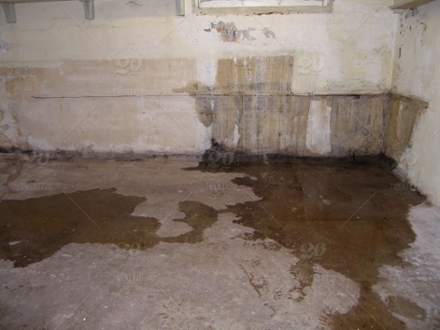My childhood home is in rough shape. While I’ve been away at college, my parents have been dealing with flooding problems in the basement. It’s not a burst pipe or anything; the water comes in from outside, somehow. It apparently ruined a bunch of our stuff, and could even cause structural issues in our house, if it’s not repaired soon. My parents aren’t too interested in home improvement and that sort of thing. So, while they’ve been quick to hire people and get everything fixed, they haven’t really explained to me how this is all happening. However, I’m curious–how can a basement just flood? It’s not like we live on a lake or anything.
Basements are a part of many houses in the United States, but they can present unique risks on a property–especially when it comes to water damage.
The specifics of basement construction and maintenance vary from region to region. In some areas, like much of Florida, buildings don’t have basements at all. In other areas, water damage to basements is fairly unlikely.
However, in many regions, basements are the one place in a home that is most susceptible to water damage. And basements rely on certain systems to protect them.
In the ground beneath our feet, there is something called the “water table.” The water table is the uppermost limit of the “zone of saturation,” which–as the name implies–is the part of the ground that is soaked in water. If you dig a hole into the zone of saturation, you’ll find that the ground is soaked and water pools in the hole you’re digging.
In many areas, the foundations of homes go down further than the water table. However, that doesn’t always stop people from building basements. Other than in extreme cases (such as in Florida, where the water table is very high), builders generally still put in basements, but they take great care to waterproof them.
Basement waterproofing involves multiple techniques and installations. Builders and repair men and women use sealants, as you might expect. They also use drainage systems and often install something called a sump pump. The sump pump collects the water that drains from around the basement and pumps it away from the house, often to the sewers, if the home is connected to a sewer system.
Things can go wrong with this system, of course. Sump pumps can fail, causing water that should pump away from the building to pool up from the floor of the basement (the sump pump is installed in a sump basin in the floor of the basement). Cracks in the foundation and problems with sealants and drainage systems allow water in through the walls, too. It’s important to inspect basements for problems regularly and to act fast if problems are apparent. A crack in the foundation requires immediate attention from experts in foundation repair and basement waterproofing.
If, as you say, the flooding your parents experienced did not originate in the home’s plumbing, it seems likely that they had a problem with one of the systems described above. Repairs will be a headache; however, they will hopefully get long-lasting work and catch future issues through regular inspections and maintenance.
“No individual raindrop ever considers itself responsible for the flood.” — John Ruskin
Content Provided by Scholarship Media


